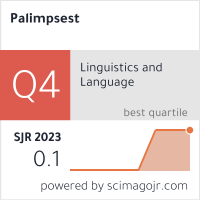PREPOSITIONS FROM A SEMANTIC POINT OF VIEW
DOI:
https://doi.org/10.46763/PALIM23816045cAbstract
The semantic nature of the word is a core issue constantly addressed in semantics. Prepositions are lexical items that are believed to exhibit more polysemy than monosemy due to the grammatical dependency relations and semantic relations they reflect in different contexts. Opinions on the semantic nature of prepositions have triggered the study of polysemy and monosemy of prepositions as reflected in monolingual dictionaries. This paper aims to reflect a statistical analysis of polysemic and monosemic prepositions, as well as to discuss on the semantic relations of prepositions. The "Dictionary of the Albanian Language" 2006, has been used to collect and research material and data. Statistically, derived prepositions formed by conversion (composition or affixation) tend to exhibit weaker semantics than the first prepositions, which have a higher density of different semantic meanings. As a result, the semantic structures of the first prepositions show pronounced polysemy. We will argue that prepositions reflected in the explanatory dictionary as a lexical item, where one meaning belongs to the use as an adverb and another meaning belongs to the meaning as a preposition, show doubtful polysemy and can be categorized more as polyfunctional aspects of prepositions. They refer to the basic meaning, which is also responsible for the kind of relationships that prepositions establish in different contexts.
Keywords: prepositions; polysemy; monosemy; meaning; semantic.


